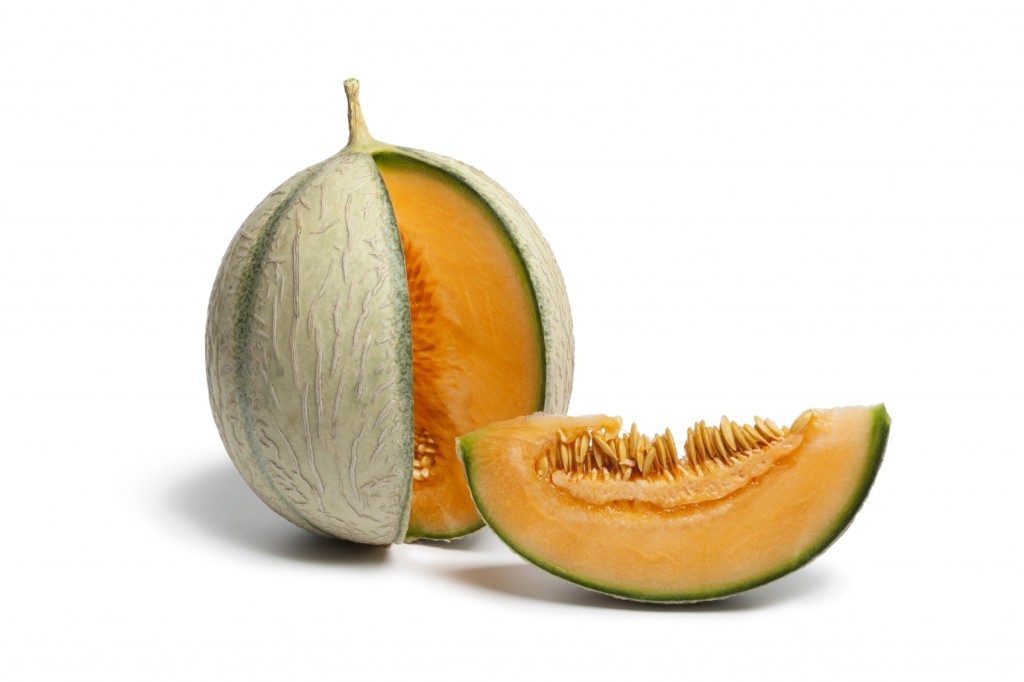
THE FRENCH
FOOD
INDUSTRY'S PORTAL
Webzine
taste it to info

Melon, King of summer
Fact Sheets /
Friday 10 July 2015
Melons originated in Africa and first came to Europe through Italy, then to France when Charles VIII first brought back a few specimens to Cavaillon. Grown and savoured in the height of their season from June to September, they are enjoyed by all food lovers for their juicy, refreshing flesh.
Production
There are four main varieties cultivated in France. The most well-known and popular is the “cantaloup charentais”, which is not only grown in Charente as its name may suggest. More commonly known as the charentais, it is recognised for its orange flesh, smooth, green skin and distinctive striped markings. Its cousin the “charentais brode”, or cantaloupe, has rougher or “netted” skin. The “vert olive” has olive green skin and is oval in shape, while “galia” is known for its white, sweet and thirst-quenching flesh. Other more ancient, local varieties are still grown in France, including “serpent”, “rouge de Perse”, “petit gris de Rennes”, “sucrin de Tours” and “melon de Trets”.
The world’s leading melon producing countries include China, with an annual production of 13.8 million tonnes and accounting for 50% of global production, Turkey, 1.7m tonnes and finally Iran, with 1.2m tonnes. However these three countries only represent a percentage of the world melon trade (Source: FAOSTAT).
In Europe, France is Europe’s third largest melon producer, growing some 270,000 tonnes in 2013 (Source: Agreste), behind Italy with 580,000 tonnes and Spain with 1m tonnes (Source: Franceagrimer).
France has three large areas of production: the Central-West region of production accounting for 32% of France’s production in 2014, the South-East accounting for 37% and finally the South-West with 25%. Together these three regions of production account for 94% of the national production (Source: Agreste, Ministère de l’Agriculture).
Consumption
In summer, melons take a starring role on menus, especially served with cured ham, such as Bayonne ham and infused with a dash of fortified wine, which is so popular in France. This round, light and juicy fruit, eaten mainly between June and September, is among France’s favourite fruits; jostling for fourth place behind strawberries, apples and bananas, according to a recent study carried out by Institut Toluna. Melons are mainly enjoyed as a fruit, even if they appear increasingly in savoury dishes or in delicious salads.
The majority of melons are bought in French hypermarkets (35%) and supermarkets (19%). The remainder are sold at local markets, hard discount and green grocers (Source: Kantar Worldpanel 2013).
Consumption figures in France have grown steadily since 2011, with an increase of 10.1% in 2013 compared to 2012 (Source: Kantar consumer panel 2013 – carried out by FranceAgrimer). Annual average household consumption has risen to 6kg (according to INSEE, based on an average household of 2.3 people). Homes in the west and south-east of France are the largest consumers of melon (Source: Kantar Worldpanel), which are sunnier regions and more suited to melon consumption.
A small percentage of French melons are also consumed abroad. In 2013, 37% of exported melons were consumed in Belgium, 30% in Switzerland and 13% in Italy (Source: GTA/Douanes françaises – élaboration FranceAgriMer)
Did you know?
After mangos and apricots, melons provide the greatest source of vitamin A. Also known as carotene, it helps prevents premature ageing of cells and is one of the most powerful antioxidants.
Top tip
Avoiding storing melons in the refrigerator, as they tend to pass on their flavours to other foods. Wrap them in cling film before storing them in the vegetable rack.
Recipe
Melon and cherry clafoutis
Ingredients
Serves 4
1 melon
4 eggs
250g cherries
100g flour
700ml skimmed milk
6 tablespoons sugar
1 tablespoon orange blossom water
Preheat the oven at 180°C (gas mark 6). Cut the melon flesh into small dice. Carefully wash and dry the cherries. Then, in a mixing bowl, combine the eggs and sugar. Add the flour and gradually pour in the milk. Mix everything together and finish with the orange blossom water. Transfer the melon and cherries into an ovenproof dish. Cover with the mixture and place in the oven for 40 minutes. Bon appétit!





